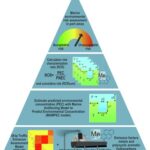2023-06-13 スイス連邦工科大学ローザンヌ校(EPFL)
◆重力レンズ効果を使って銀河の質量を測定することは難しいため、これまでにわずかな例が観測されています。ESA-NASAのEuclidミッションにより、数百のレンズ効果を持つクエーサーが検出されることが期待されています。
<関連情報>
- https://actu.epfl.ch/news/weigh-a-quasar-s-galaxy-with-precision/
- https://www.nature.com/articles/s41550-023-01982-2
AGNによる強い重力レンズは、遠い宇宙のクェーサーとホストとの関係のプローブとなる。 Strong gravitational lensing by AGNs as a probe of the quasar–host relations in the distant Universe
Martin Millon,Frédéric Courbin,Aymeric Galan,Dominique Sluse,Xuheng Ding,Malte Tewes & S. G. Djorgovski
Nature Astronomy Published:01 June 2023
DOI:https://doi.org/10.1038/s41550-023-01982-2

Abstract
The tight correlations found between the mass of supermassive black holes and the luminosities, stellar masses and velocity dispersions of their host galaxies are often interpreted as a sign of their co-evolution. Studying these correlations across redshift provides a powerful insight into the evolutionary path followed by the quasar and its host galaxy. While the mass of the black hole is accessible from single-epoch spectra, measuring the mass of its host galaxy is challenging as the active nucleus largely overshines its host. Here we present a technique to probe quasar–host relations beyond the local Universe with strong gravitational lensing, hence overcoming the use of stellar population models or velocity dispersion measurements, both prone to degeneracies. We study in detail one of the three known cases of strong lensing by a quasar to accurately measure the mass of its host and to infer a total lensing mass within the Einstein radius. The lensing measurement is more precise than any other alternative technique and compatible with the local scaling relation between the mass of the black hole and the stellar mass. The sample of such quasar–galaxy or quasar–quasar lensing systems should reach a few hundred with Euclid and the Rubin-Large Synoptic Survey Telescope, thus enabling the application of such a method with statistically significant sample sizes.



